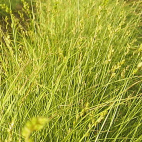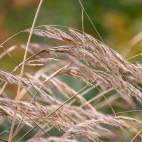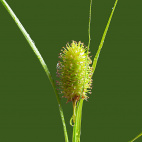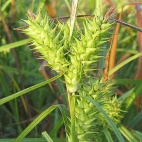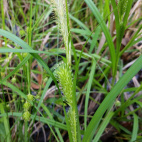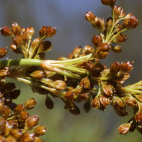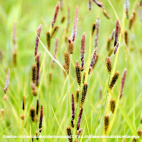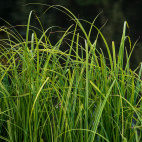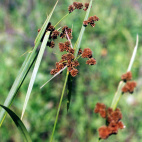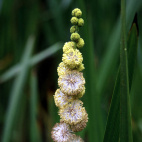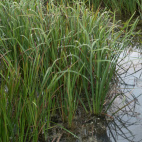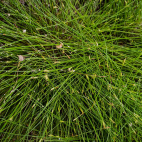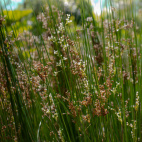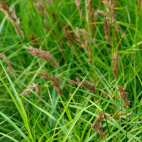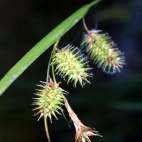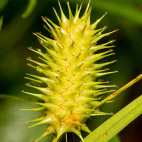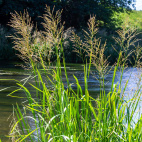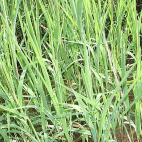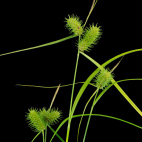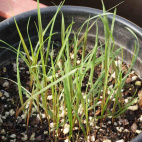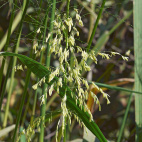Color
Availability
USDA Zone
Region
Type
Duration
Season
Germination
Soil
Sunlight
Height
Narrow Your Search
Color
Availability
USDA Zone
Region
Type
Duration
Season
Germination
Soil
Sunlight
Height
US Native Wetland Grass Seeds
-
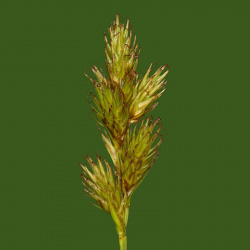 Awl fruited Oval Sedge Seeds
Carex tribuloides
Growing in the cool season, the awl fruited sedge bears a close resemblance to other members of the Sedge family. This perennial forms seeds early in the season and drops its seeds in the summer.Quick Viewx
Awl fruited Oval Sedge Seeds
Carex tribuloides
Growing in the cool season, the awl fruited sedge bears a close resemblance to other members of the Sedge family. This perennial forms seeds early in the season and drops its seeds in the summer.Quick ViewxAwl fruited Oval Sedge Seeds
Carex tribuloides
Growing in the cool season, the awl fruited sedge bears a close resemblance to other members of the Sedge family. This perennial forms seeds early in the season and drops its seeds in the summer.
$3.25 Pkt - $20.59 / Oz -
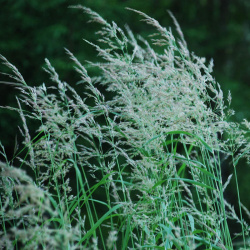 Blue Joint Grass Seeds
Calamagrostis canadensis
A valuable wetlands restoration species, this grass is the most frequent associate of sedges. It grows into a dense patch of grass with lots of fibrous roots, so it is an excellent option for strengthening stream banks or shoreline restoration work.Quick View$3.75 Pkt - $100.00 / Oz
Blue Joint Grass Seeds
Calamagrostis canadensis
A valuable wetlands restoration species, this grass is the most frequent associate of sedges. It grows into a dense patch of grass with lots of fibrous roots, so it is an excellent option for strengthening stream banks or shoreline restoration work.Quick View$3.75 Pkt - $100.00 / Oz -
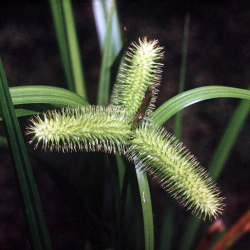 Bristly Sedge Seeds
Carex comosa
Sometimes called Longhair Sedge, this native perennial thrives in soggy soil and forms long needle-like spines on its seedhead. Like most sedges, this is a cool-season perennial, and so forms seeds early in the season, and drops its seeds in the summer.Quick Viewx
Bristly Sedge Seeds
Carex comosa
Sometimes called Longhair Sedge, this native perennial thrives in soggy soil and forms long needle-like spines on its seedhead. Like most sedges, this is a cool-season perennial, and so forms seeds early in the season, and drops its seeds in the summer.Quick ViewxBristly Sedge Seeds
Carex comosa
Sometimes called Longhair Sedge, this native perennial thrives in soggy soil and forms long needle-like spines on its seedhead. Like most sedges, this is a cool-season perennial, and so forms seeds early in the season, and drops its seeds in the summer.
$3.25 Pkt - $32.00 / Oz -
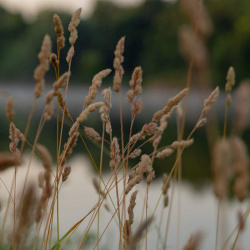 On Sale!
Brown Fox Sedge Seeds
Carex vulpinoidea
With seedheads resembling bushy fox tails, this native sedge is one of the most common members of the Sedge family. It is highly adaptable to either sun or shade and is often seen growing over large marshy areas.Quick Viewx
On Sale!
Brown Fox Sedge Seeds
Carex vulpinoidea
With seedheads resembling bushy fox tails, this native sedge is one of the most common members of the Sedge family. It is highly adaptable to either sun or shade and is often seen growing over large marshy areas.Quick ViewxBrown Fox Sedge Seeds
Carex vulpinoidea
With seedheads resembling bushy fox tails, this native sedge is one of the most common members of the Sedge family. It is highly adaptable to either sun or shade and is often seen growing over large marshy areas.
$3.25 Pkt - $11.03 / Oz -
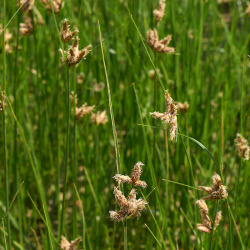 Chairmaker's Rush Seeds
Scirpus pungens
The stems of this native rush were actually used for weaving sturdy chair seats in years gone by. This perennial is a widespread species and is used extensively in wetland restoration projects.Quick Viewx
Chairmaker's Rush Seeds
Scirpus pungens
The stems of this native rush were actually used for weaving sturdy chair seats in years gone by. This perennial is a widespread species and is used extensively in wetland restoration projects.Quick ViewxChairmaker's Rush Seeds
Scirpus pungens
The stems of this native rush were actually used for weaving sturdy chair seats in years gone by. This perennial is a widespread species and is used extensively in wetland restoration projects.
$3.48 Pkt - $40.00 / Oz -
 Common Cattail Sedge Seeds
Carex typhina
This picturesque sedge is easy to identify with vertical seed heads that look like Cattails. It also grows in wetland areas like Cattails, but it is not invasive. This sedge is a cool-season perennial that drops it's seeds in the summer.Quick View$3.75 Pkt - $72.00 / Oz
Common Cattail Sedge Seeds
Carex typhina
This picturesque sedge is easy to identify with vertical seed heads that look like Cattails. It also grows in wetland areas like Cattails, but it is not invasive. This sedge is a cool-season perennial that drops it's seeds in the summer.Quick View$3.75 Pkt - $72.00 / Oz -
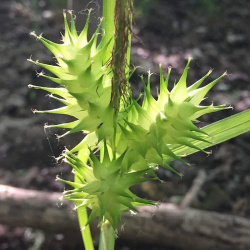 Common Hop Sedge Seeds
Carex lupulina
Often used in wetland restoration, this vigorous sedge grows large spiky heads on wide leaf blades. The seeds are a challenge to get out of the pods, but the birds seem to enjoy the challenge. This common hop sedge is a cool-season perennial that forms seeds early in the season and drops them in the summer.Quick Viewx
Common Hop Sedge Seeds
Carex lupulina
Often used in wetland restoration, this vigorous sedge grows large spiky heads on wide leaf blades. The seeds are a challenge to get out of the pods, but the birds seem to enjoy the challenge. This common hop sedge is a cool-season perennial that forms seeds early in the season and drops them in the summer.Quick ViewxCommon Hop Sedge Seeds
Carex lupulina
Often used in wetland restoration, this vigorous sedge grows large spiky heads on wide leaf blades. The seeds are a challenge to get out of the pods, but the birds seem to enjoy the challenge. This common hop sedge is a cool-season perennial that forms seeds early in the season and drops them in the summer.
$3.48 Pkt - $40.00 / Oz -
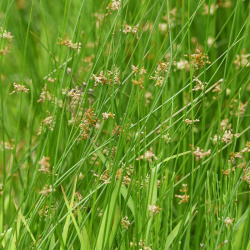 Common Rush Seeds
Juncus effusus
Native to most of North America, this prolific rush quickly grows by ponds, marshes, and wetlands. This perennial rush grows in the cool seasons, so the tiny seeds ripen in the summer and fall like red dust to the damp soil below.Quick View$3.25 Pkt - $21.00 / Oz
Common Rush Seeds
Juncus effusus
Native to most of North America, this prolific rush quickly grows by ponds, marshes, and wetlands. This perennial rush grows in the cool seasons, so the tiny seeds ripen in the summer and fall like red dust to the damp soil below.Quick View$3.25 Pkt - $21.00 / Oz -
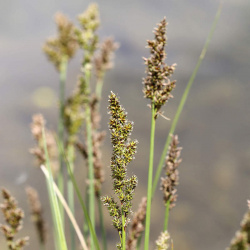 Common Tussock Sedge Seeds
Carex stricta
Named for the tussock eventually formed by its dead leaves, this sedge abounds in seasonal wetlands. This common tussock sedge is a cool-season perennial, and so forms seeds early in the season, and drops its seeds in the summer.Quick View$3.75 Pkt - $80.00 / Oz
Common Tussock Sedge Seeds
Carex stricta
Named for the tussock eventually formed by its dead leaves, this sedge abounds in seasonal wetlands. This common tussock sedge is a cool-season perennial, and so forms seeds early in the season, and drops its seeds in the summer.Quick View$3.75 Pkt - $80.00 / Oz -
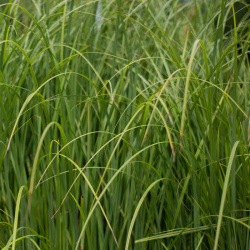 Cord Grass Seeds
Spartina pectinata
Forming dense colonies of tall vegetation, this water-loving grass adds beauty to shorelines and marshes during the warm seasons. This native perennial is an excellent choice for an area that has a lot of competition because it is quite aggressive.Quick View$3.48 Pkt - $16.57 / Oz
Cord Grass Seeds
Spartina pectinata
Forming dense colonies of tall vegetation, this water-loving grass adds beauty to shorelines and marshes during the warm seasons. This native perennial is an excellent choice for an area that has a lot of competition because it is quite aggressive.Quick View$3.48 Pkt - $16.57 / Oz -
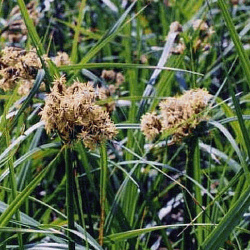 Dark Green Bulrush Seeds
Scirpus atrovirens
Because of it's aquatic nature, this native rush needs a constant supply of water. It is a common sight in wetlands, marshes, lakes, and ponds. This hardy perennial grows best in the cool seasons of spring and fall.Quick View$2.98 Pkt - $11.88 / Oz
Dark Green Bulrush Seeds
Scirpus atrovirens
Because of it's aquatic nature, this native rush needs a constant supply of water. It is a common sight in wetlands, marshes, lakes, and ponds. This hardy perennial grows best in the cool seasons of spring and fall.Quick View$2.98 Pkt - $11.88 / Oz -
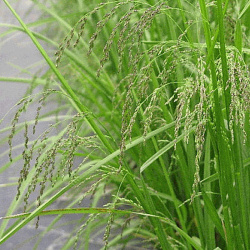 Fowl Manna Grass Seeds
Glyceria striata
As suggested by its name, the fowl manna grass seeds of this popular native plant are a natural food source for ducks, geese, and other domestic birds. In the wild, it prefers a little shade with wet soil, but can also be grown in average soil in full sun.Quick View$3.25 Pkt - $16.57 / Oz
Fowl Manna Grass Seeds
Glyceria striata
As suggested by its name, the fowl manna grass seeds of this popular native plant are a natural food source for ducks, geese, and other domestic birds. In the wild, it prefers a little shade with wet soil, but can also be grown in average soil in full sun.Quick View$3.25 Pkt - $16.57 / Oz -
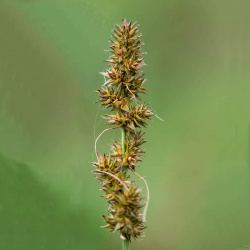 Fox Sedge Seeds
Carex stipata
Resembling fox tails, these bushy seed heads grow on graceful, arching foliage. This sedge is very flexible with the amount of light it needs and can grow in full sunlight, full shade, or anything in between.Quick Viewx
Fox Sedge Seeds
Carex stipata
Resembling fox tails, these bushy seed heads grow on graceful, arching foliage. This sedge is very flexible with the amount of light it needs and can grow in full sunlight, full shade, or anything in between.Quick ViewxFox Sedge Seeds
Carex stipata
Resembling fox tails, these bushy seed heads grow on graceful, arching foliage. This sedge is very flexible with the amount of light it needs and can grow in full sunlight, full shade, or anything in between.
$3.48 Pkt - $24.00 / Oz -
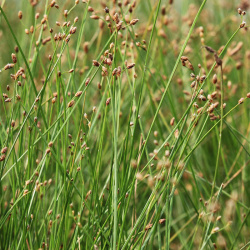 Great Bulrush Seeds
Scirpus validus
The soft stems of this native rush were once used by Native Americans for fine weaving purposes. It grows in the cool seasons and gets quite tall by the time summer arrives. Waterfowl like to feast on the ripened seed heads.Quick View$3.48 Pkt - $18.77 / Oz
Great Bulrush Seeds
Scirpus validus
The soft stems of this native rush were once used by Native Americans for fine weaving purposes. It grows in the cool seasons and gets quite tall by the time summer arrives. Waterfowl like to feast on the ripened seed heads.Quick View$3.48 Pkt - $18.77 / Oz -
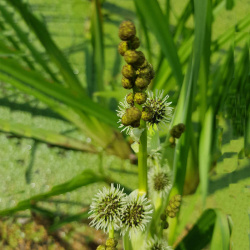 Great Bur Reed Seeds
Sparganium eurycarpum
Though it sometimes masquerades as just another grass, this wetland plant produces unusual globular white flowers that set it apart from the rest. This native plant also makes an excellent choice for dried flower arrangements.Quick Viewx
Great Bur Reed Seeds
Sparganium eurycarpum
Though it sometimes masquerades as just another grass, this wetland plant produces unusual globular white flowers that set it apart from the rest. This native plant also makes an excellent choice for dried flower arrangements.Quick ViewxGreat Bur Reed Seeds
Sparganium eurycarpum
Though it sometimes masquerades as just another grass, this wetland plant produces unusual globular white flowers that set it apart from the rest. This native plant also makes an excellent choice for dried flower arrangements.
$3.25 Pkt - $11.03 / Oz -
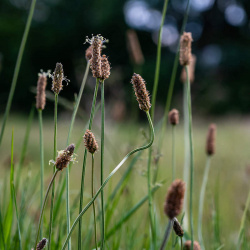 Great Spike Rush Seeds
Eleocharis palustris
This little native rush is often found growing beside creeks, rivers, and ponds. It does not become very tall but grows in the cool season, and it is an excellent food source for ducks, geese, and other creatures of the wetlands.Quick Viewx
Great Spike Rush Seeds
Eleocharis palustris
This little native rush is often found growing beside creeks, rivers, and ponds. It does not become very tall but grows in the cool season, and it is an excellent food source for ducks, geese, and other creatures of the wetlands.Quick ViewxGreat Spike Rush Seeds
Eleocharis palustris
This little native rush is often found growing beside creeks, rivers, and ponds. It does not become very tall but grows in the cool season, and it is an excellent food source for ducks, geese, and other creatures of the wetlands.
$3.96 Pkt - $58.00 / Oz -
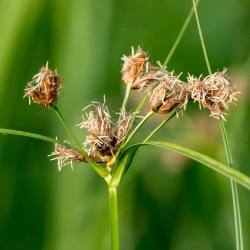 Inland Rush Seeds
Juncus interior
These stiff upright rushes form clumps that thrive in the wetlands of the midwestern US. This native perennial turns lots of sunshine and moisture into millions of tiny seeds!Quick Viewx
Inland Rush Seeds
Juncus interior
These stiff upright rushes form clumps that thrive in the wetlands of the midwestern US. This native perennial turns lots of sunshine and moisture into millions of tiny seeds!Quick ViewxInland Rush Seeds
Juncus interior
These stiff upright rushes form clumps that thrive in the wetlands of the midwestern US. This native perennial turns lots of sunshine and moisture into millions of tiny seeds!
$3.25 Pkt - $36.00 / Oz -
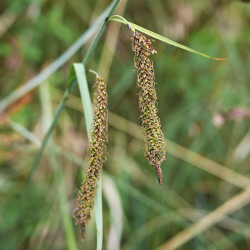 Northwest Territory Sedge Seeds
Carex utriculata
Growing throughout the entire northern region of North America, this hardy sedge thrives in marshy conditions. Prickly green heads form throughout the spring and summer.Quick Viewx
Northwest Territory Sedge Seeds
Carex utriculata
Growing throughout the entire northern region of North America, this hardy sedge thrives in marshy conditions. Prickly green heads form throughout the spring and summer.Quick ViewxNorthwest Territory Sedge Seeds
Carex utriculata
Growing throughout the entire northern region of North America, this hardy sedge thrives in marshy conditions. Prickly green heads form throughout the spring and summer.
$3.96 Pkt - $76.00 / Oz -
 On Sale!
Oval Sedge Seeds
Carex scoparia
Also called Broom Sedge, this native sedge forms bristly seed heads. This wetland plant is often used for rain gardens and wetland restoration. This sedge is a cool-season perennial, and so forms seeds early in the season, and drops its seeds in the summer.Quick View$3.25 Pkt - $16.57 / Oz
On Sale!
Oval Sedge Seeds
Carex scoparia
Also called Broom Sedge, this native sedge forms bristly seed heads. This wetland plant is often used for rain gardens and wetland restoration. This sedge is a cool-season perennial, and so forms seeds early in the season, and drops its seeds in the summer.Quick View$3.25 Pkt - $16.57 / Oz -
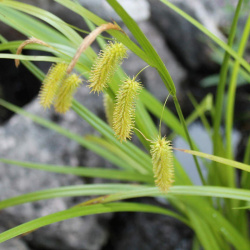 Porcupine Sedge Seeds
Carex hystericina
This moisture-loving species is excellent for marshy areas, swamps, or shorelines. True to its name, this clumped sedge bears prickly, oval seed heads. Like most sedges, this is a cool-season perennial, and so forms seeds early in the season, and drops its seeds in the summer.Quick Viewx
Porcupine Sedge Seeds
Carex hystericina
This moisture-loving species is excellent for marshy areas, swamps, or shorelines. True to its name, this clumped sedge bears prickly, oval seed heads. Like most sedges, this is a cool-season perennial, and so forms seeds early in the season, and drops its seeds in the summer.Quick ViewxPorcupine Sedge Seeds
Carex hystericina
This moisture-loving species is excellent for marshy areas, swamps, or shorelines. True to its name, this clumped sedge bears prickly, oval seed heads. Like most sedges, this is a cool-season perennial, and so forms seeds early in the season, and drops its seeds in the summer.
$3.48 Pkt - $18.77 / Oz -
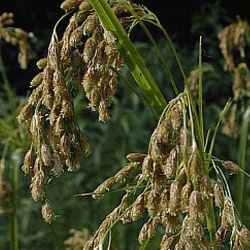 Red Bulrush Seeds
Scirpus pendulus
This adaptable native rush produces pretty nodding seed clumps on tall stems. This rush is a cool-season perennial that usually grows in wet areas, where waterfowl feed on the fresh crop of seeds each summer.Quick Viewx
Red Bulrush Seeds
Scirpus pendulus
This adaptable native rush produces pretty nodding seed clumps on tall stems. This rush is a cool-season perennial that usually grows in wet areas, where waterfowl feed on the fresh crop of seeds each summer.Quick ViewxRed Bulrush Seeds
Scirpus pendulus
This adaptable native rush produces pretty nodding seed clumps on tall stems. This rush is a cool-season perennial that usually grows in wet areas, where waterfowl feed on the fresh crop of seeds each summer.
$3.48 Pkt - $18.77 / Oz -
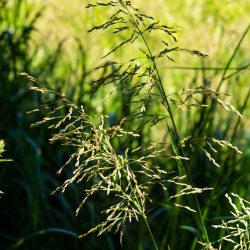 Reed Manna Grass Seeds
Glyceria grandis
An essential member of the wetland community, this native grass flourishes in marshes or along streams. It is a cool-season grass and is easy to grow, so it is a popular choice if a taller grass is desired in a wet area.Quick Viewx
Reed Manna Grass Seeds
Glyceria grandis
An essential member of the wetland community, this native grass flourishes in marshes or along streams. It is a cool-season grass and is easy to grow, so it is a popular choice if a taller grass is desired in a wet area.Quick ViewxReed Manna Grass Seeds
Glyceria grandis
An essential member of the wetland community, this native grass flourishes in marshes or along streams. It is a cool-season grass and is easy to grow, so it is a popular choice if a taller grass is desired in a wet area.
$3.25 Pkt - $21.00 / Oz -
 Rice Cut Grass Seeds
Leersia oryzoides
This native grass has rough foliage that feels sharp because of the many tiny barbs on the underside of each leaf. This perennial is a common wetland grass that is used for many restoration projects.Quick Viewx
Rice Cut Grass Seeds
Leersia oryzoides
This native grass has rough foliage that feels sharp because of the many tiny barbs on the underside of each leaf. This perennial is a common wetland grass that is used for many restoration projects.Quick ViewxRice Cut Grass Seeds
Leersia oryzoides
This native grass has rough foliage that feels sharp because of the many tiny barbs on the underside of each leaf. This perennial is a common wetland grass that is used for many restoration projects.
$3.25 Pkt - $16.57 / Oz -
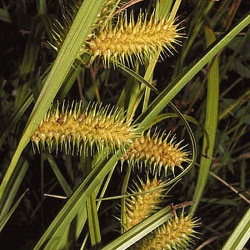 On Sale!
Sallow Sedge Seeds
Carex lurida
This native sedge prefers wet soil to produce it's yellowish spiny seed heads. This native sedge is not as common as some of its cousins but is sometimes used for native wetland restoration projects.Quick Viewx
On Sale!
Sallow Sedge Seeds
Carex lurida
This native sedge prefers wet soil to produce it's yellowish spiny seed heads. This native sedge is not as common as some of its cousins but is sometimes used for native wetland restoration projects.Quick ViewxSallow Sedge Seeds
Carex lurida
This native sedge prefers wet soil to produce it's yellowish spiny seed heads. This native sedge is not as common as some of its cousins but is sometimes used for native wetland restoration projects.
$3.48 Pkt - $16.57 / Oz -
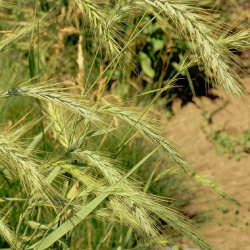 Virginia Wild Rye Seeds
Elymus virginicus
This perennial grass is not closely related to agricultural rye but is a native grass that is used in many wetland plantings. It is popular because it can tolerate anything from full sun to the woodland setting, making it a versatile species. It is a cool-season grass that is very cold hardy.Quick Viewx
Virginia Wild Rye Seeds
Elymus virginicus
This perennial grass is not closely related to agricultural rye but is a native grass that is used in many wetland plantings. It is popular because it can tolerate anything from full sun to the woodland setting, making it a versatile species. It is a cool-season grass that is very cold hardy.Quick ViewxVirginia Wild Rye Seeds
Elymus virginicus
This perennial grass is not closely related to agricultural rye but is a native grass that is used in many wetland plantings. It is popular because it can tolerate anything from full sun to the woodland setting, making it a versatile species. It is a cool-season grass that is very cold hardy.
$3.48 Pkt - $5.96 / Oz -
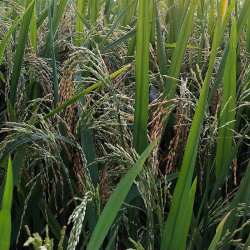 Store in the Fridge
Wild Rice Seeds
Zizania aquatica
Known for its delicious nutty flavor, this black rice-like seed is popular for gourmet soups or pilaf. This robust aquatic grass grows best in shallow water without much current.Quick View$4.75 Pkt - $7.92 / Oz
Store in the Fridge
Wild Rice Seeds
Zizania aquatica
Known for its delicious nutty flavor, this black rice-like seed is popular for gourmet soups or pilaf. This robust aquatic grass grows best in shallow water without much current.Quick View$4.75 Pkt - $7.92 / Oz -
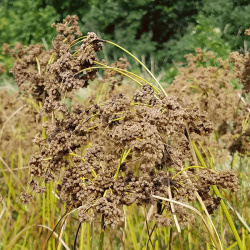 On Sale!
Wool Grass Seeds
Scirpus cyperinus
As the name suggests, this native wetland rush produces a wooly material in its mature seed heads. It makes a unique addition to a water garden or stream bank.Quick View$3.25 Pkt - $15.95 / Oz
On Sale!
Wool Grass Seeds
Scirpus cyperinus
As the name suggests, this native wetland rush produces a wooly material in its mature seed heads. It makes a unique addition to a water garden or stream bank.Quick View$3.25 Pkt - $15.95 / Oz




